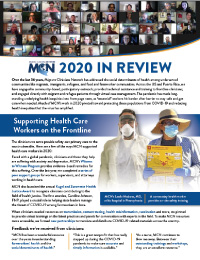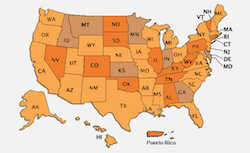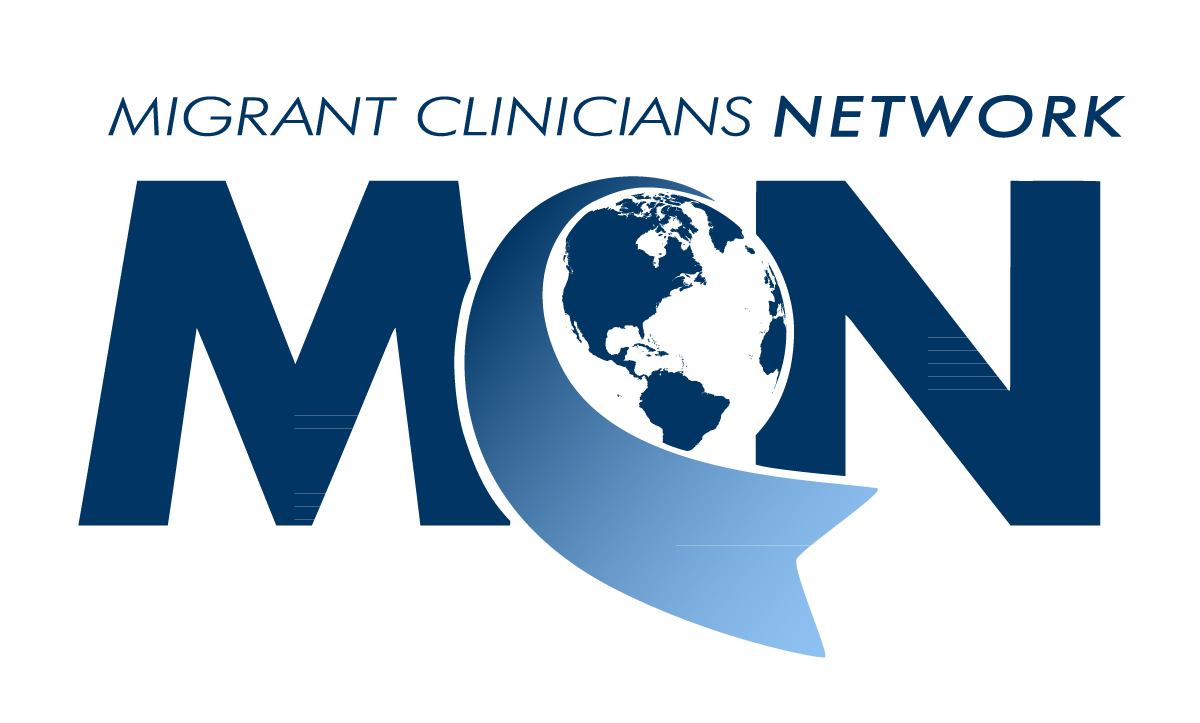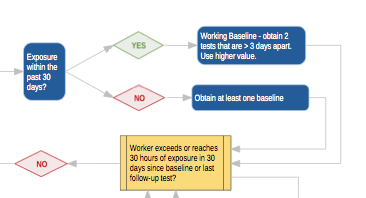- Who We Are
- Clinician Employment
- Publications
- Witness to Witness (W2W)
- Kugel & Zuroweste Health Justice Award
- Your Voice Matters: Photovoice Project
Resources
Close Resources⇧
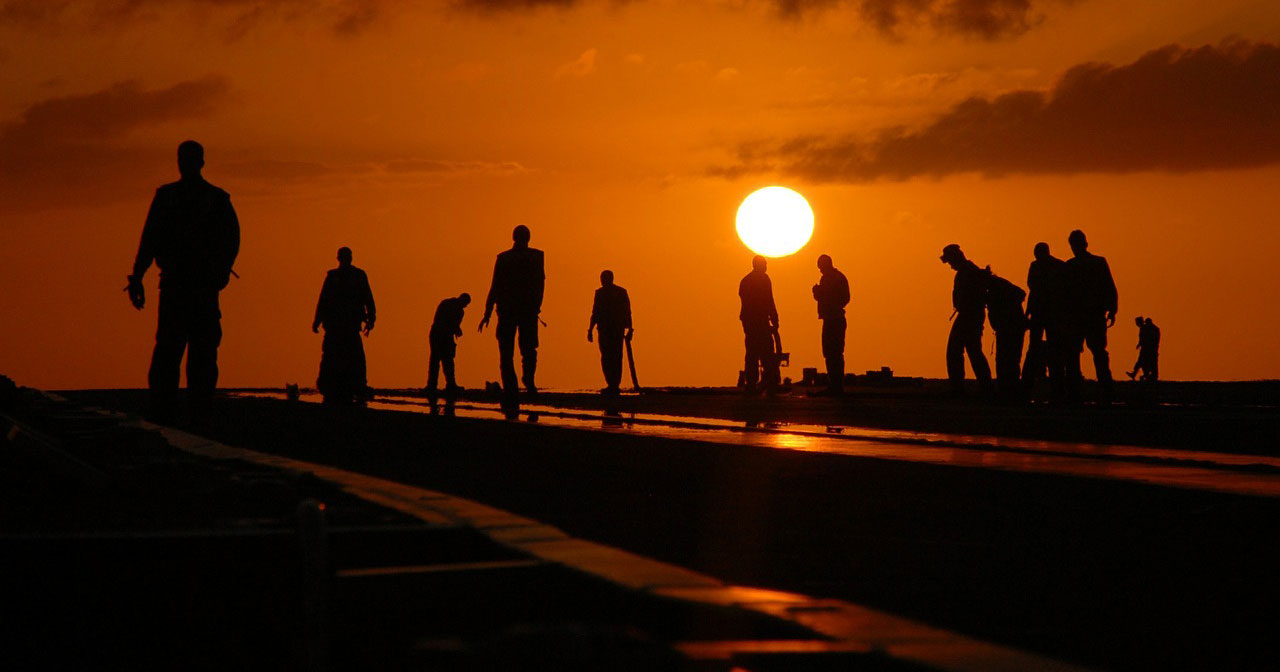
Climate change is the great amplifier of social inequities. It is already affecting and will continue to affect the health and wellbeing of vulnerable populations like migrants, both in the US and internationally. Additionally, climate change is expected to increase the number of migrants worldwide, as people seek more stable and safer conditions for living. Finally, climate change increases major weather events that require quick and often dangerous clean-up and demolition. Many people move to disaster zones to heed the call for disaster relief workers -- but may increase their health risks as a result.
Health Risks
“The vulnerability of any given group is a function of its sensitivity to climate change related health risks, its exposure to those risks, and its capacity for responding to or coping with climate variability and change,” notes the The Impacts of Climate Change on Human Health in the United States: A Scientific Assessment, a 2016 publication of the US Global Change Research Program. Migrants are more exposed to climate change-related events, are more sensitive to such changes as a result of their poverty and mobility, and are less equipped to adapt to these changes, than the general US population.
Greater exposure: While en route, migrants are greatly exposed to the elements, with few resources to protect their bodies. Migrants may work in poor conditions or in the outdoors. Migrants frequently live in substandard housing, that may lack heating, cooling, sufficient insulation, or window screens. With climate change’s close link to increased temperatures in most parts of the country, it is important to note that even small increases in average temperature are associated with a substantial increase in heat-related illnesses.
Greater sensitivity: Migrants are already vulnerable to a wide range of health-related concerns that are predicted to increase or become more severe as a result of climate change, including water poverty and contamination concerns, food insecurity, exposure to pathogens and insects, and heat stress.
Less ability to adapt: Conversely, migrants do not have financial resources, community support, or access to tools and resources to mitigate their exposure to weather changes and the pressures that those changes place on daily life. Whereas many Americans may be able to turn on the air conditioner during a week of 100+ degree days, many migrants may lack that option or may not be able to afford the cost, increasing the risk of heat stress. As weather changes allow the growth of mosquito ranges and the lengthening of mosquito seasons, people who work outdoors and who do not have the resources to fend off bites will be more prone to mosquito-borne illness. While climate change may not be the original actor that places stress on a household, it may be the coup de grace that results in health failures, debilitating levels of poverty, or both.
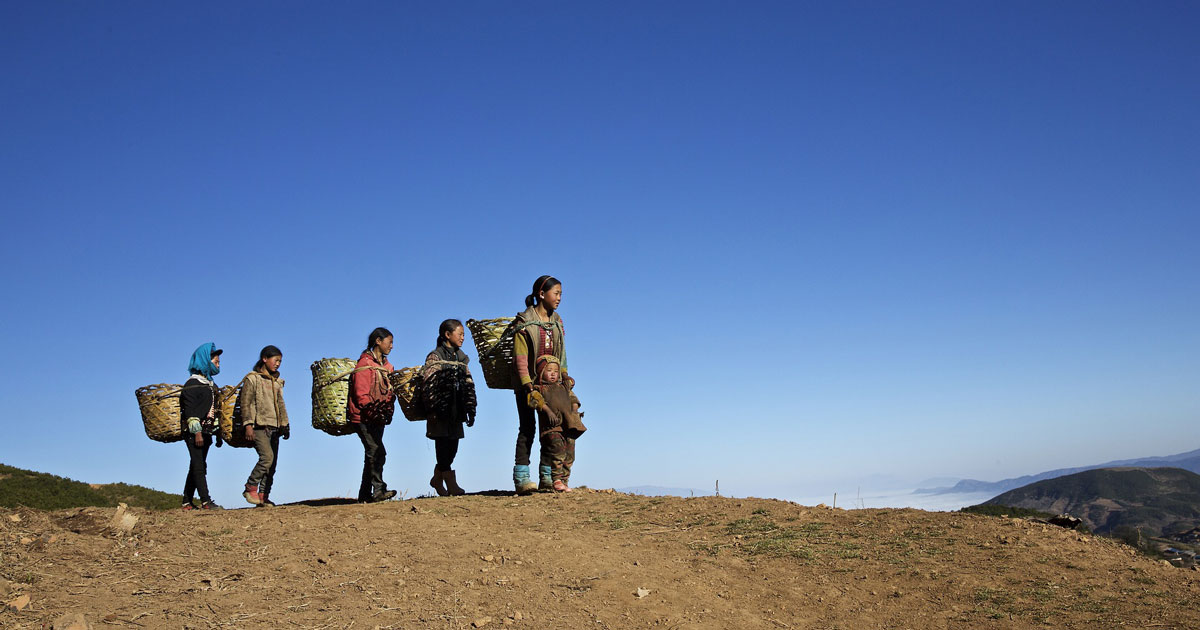
Climate Migrants: The new normal?
Climate change threatens to displace millions of people around the world. Sea level rise, the increase in climate-induced regional conflict, and water and food scarcity as a result of droughts, ocean acidification, and other climate-related factors are just a few of the challenges that our planet’s seven billion people are facing. While the focus is on the vulnerable in some of the poorest nations in the world, the US is not immune. From Alaskan villagers fleeing erosion, to multi-million-dollar investments in street-level sea water pumps in Florida, to US grants to help the most vulnerable communities prepare to move, the long-term effects of climate change are already pushing people out of their homes and causing communities to rethink how and where people live. Millions more will continue to be affected, by both long-term, slower changes, and by more frequent short-term weather events like hurricanes. Read "We’re Providing Medical Care to a New Type of Migrant — The Climate Migrant," a 2019 perspective piece on STAT News written by MCN's Ed Zuroweste, MD.
Disasters and Mobile Populations
Migrant populations’ vulnerabilities are greatly exposed during and after climate disasters. Rural communities like farmworker housing clusters are often the first to lose critical infrastructure like building integrity, roads and transportation, communication technology, electricity, and water infrastructure. Without access to such basics, health concerns may quickly follow.
Additionally, many mobile workers like day laborers may enter disaster zones to assist with clean-up and demolition -- without the proper training or equipment to do so safely. After Hurricane Katrina, Latino demolition workers encountered numerous health and safety risks, in addition to crime victimization and community exclusion. Read more about disaster response and environmental health and safety at our Emergency Preparedness, Response, and Recovery page.
“Do No Harm” does not mean “Do Nothing”: A Call to Migrant Clinicians for Climate Justice
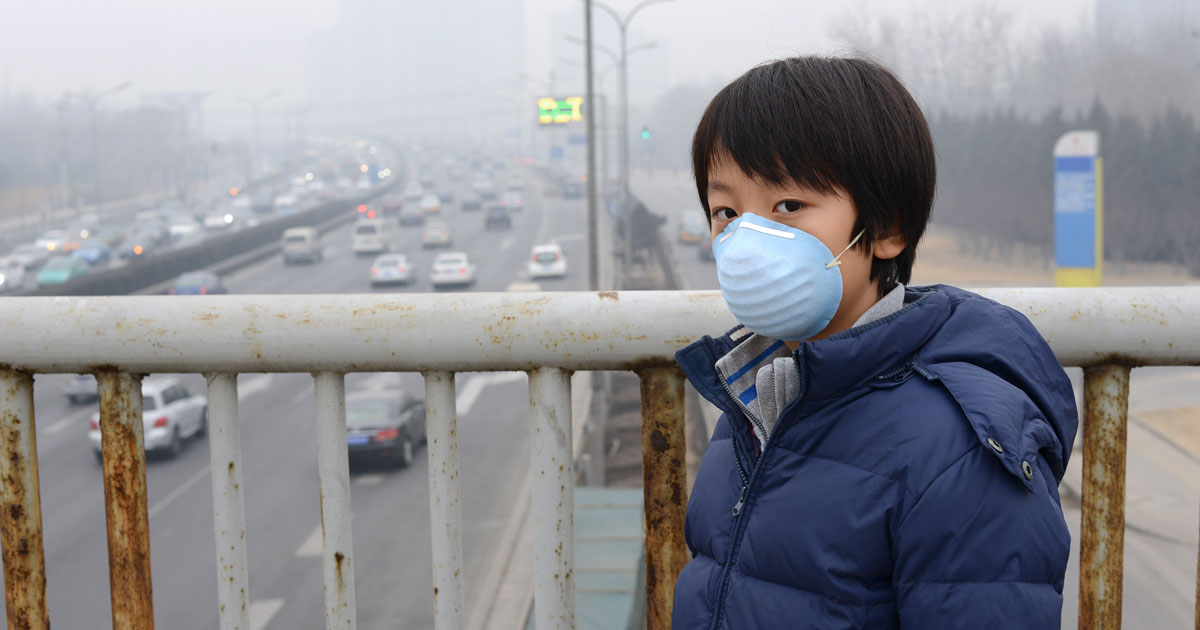
“Tackling climate change could be the greatest global health opportunity of the 21st century.” -- The Lancet Commission on Health and Climate Change, 2015
Climate change is a major health concern for all people, not just migrants. Increased air pollution, water pollution and scarcity, and changes in food production may indeed affect even those with access to the most resources to adapt. But as with many stressors, climate change will hit vulnerable populations the hardest. As clinicians serving mobile, immigrant, and other underserved populations, we have a unique perspective on the effects of climate change. MCN calls on clinicians to publicly voice the health effects of climate change and call on local and national leaders to act on climate by reducing greenhouse gas emissions, transitioning immediately to renewable energy, and supporting environment-friendly legislation. Stay involved and use your position as a health practitioner to move our health centers, our communities, our country, and the world onto the right path. Find a local advocacy group focused on climate justice, and lend your expertise as a health practitioner serving the underserved.
Many organizations focus on the link between climate change and health, and many more provide resources and information on climate change and its effects on health. Here are a few resources. We encourage you to look to your own community to find ways to participate.
The Impacts of Climate Change on Human Health in the United States: A Scientific Assessment, by the US Global Change Research Program
The Lancet’s climate page has a wealth of information, including updates from the Lancet Countdown, which tracks progress on health and climate. The Planetary Health page offers infographics along with special reports about the links between health and climate.
The US Climate Resilience Toolkit has numerous useful resources for clinicians.
The AMA’s Journal of Ethics dedicated one open-access issue to the topic, “Health Care Ethics and Professionalism in the Era of Climate Change.”
CDC’s Climate and Health page has information, resources, and fact sheets. This page also discusses how cities and regions can prepare and adapt to climate changes.
Center for Climate Change and Health pushes for a healthier climate, and provides resources.
NASA’s Global Climate Change page covers the more basic science behind climate change and the global consensus.
Many toolkits and resources exist on climate change specifically for physicians, nurses, and health departments, and health centers and hospitals.
The Lancet’s climate page has a wealth of information, including updates from the Lancet Countdown, which tracks progress on health and climate. The Planetary Health page offers infographics along with special reports about the links between health and climate.
The US Climate Resilience Toolkit has numerous useful resources for clinicians.
The AMA’s Journal of Ethics dedicated one open-access issue to the topic, “Health Care Ethics and Professionalism in the Era of Climate Change.”
CDC’s Climate and Health page has information, resources, and fact sheets. This page also discusses how cities and regions can prepare and adapt to climate changes.
Center for Climate Change and Health pushes for a healthier climate, and provides resources.
NASA’s Global Climate Change page covers the more basic science behind climate change and the global consensus.
Many toolkits and resources exist on climate change specifically for physicians, nurses, and health departments, and health centers and hospitals.
This webpage was provided by generous contributions from clinicians, health justice advocates, and MCN supporters. Please support our work on the intersection of climate change, social justice, migration, and health -- make an individual donation to MCN today.
